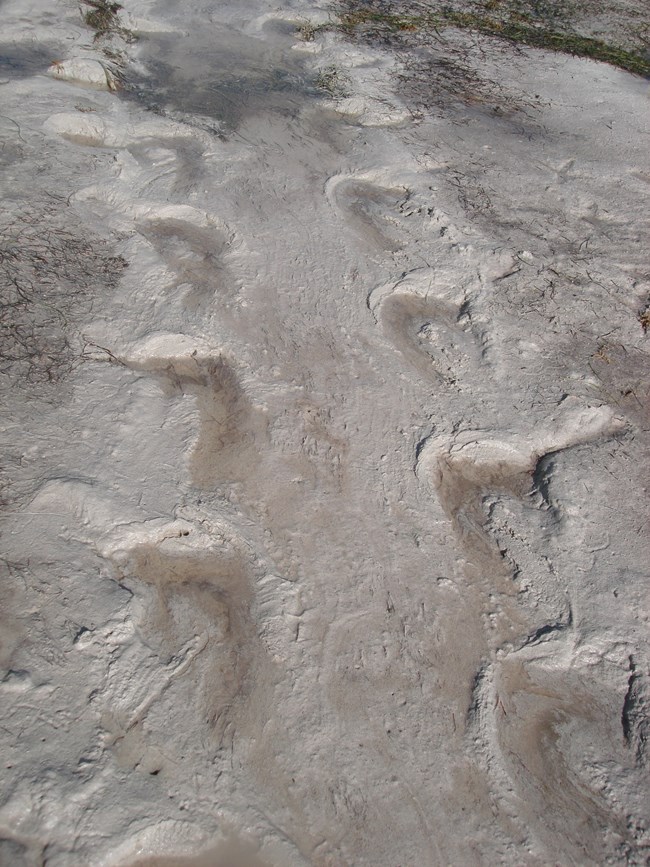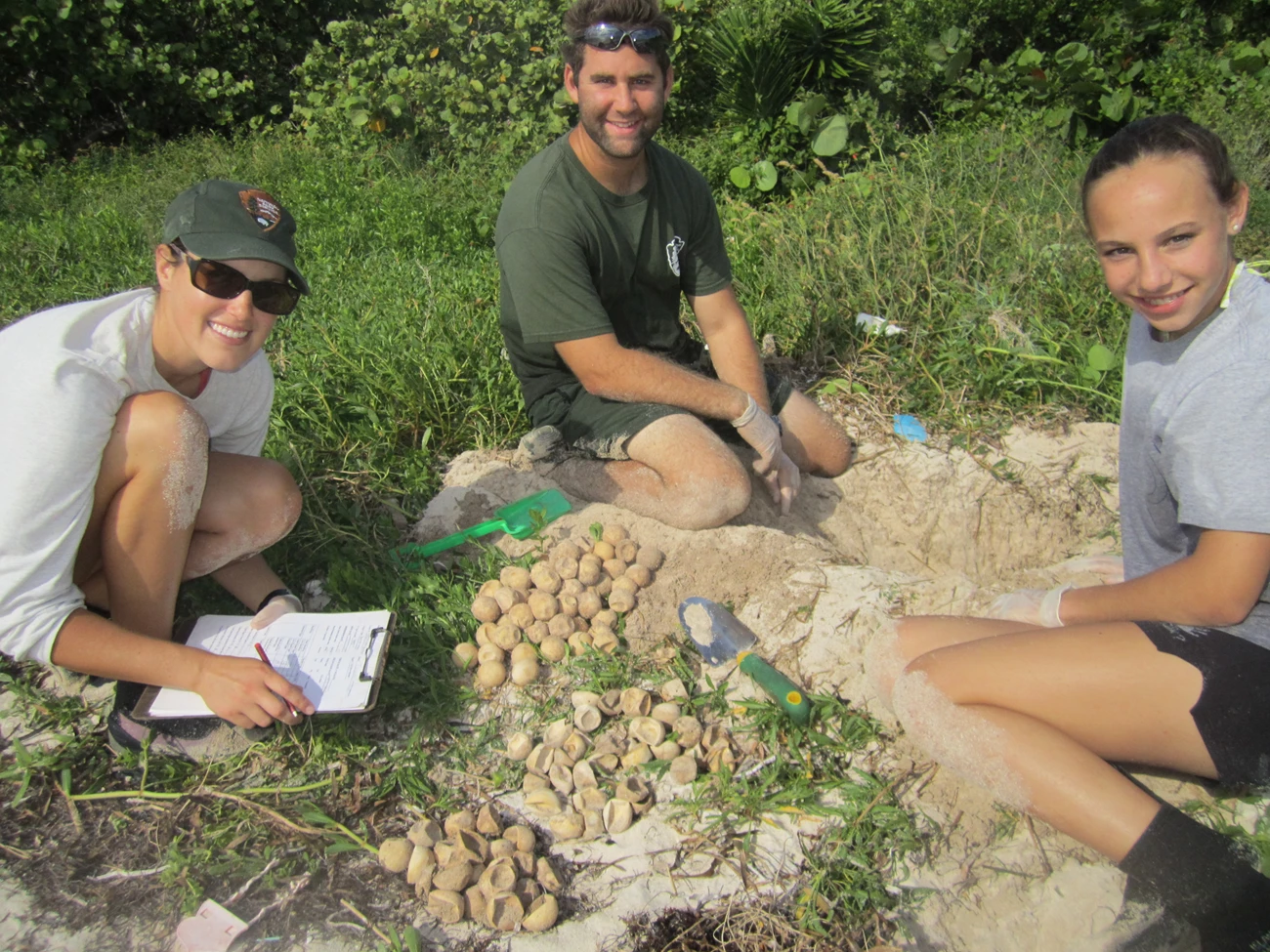
NPS 2011's Sea Turtle Conservation Efforts began with habitat restoration activities in January and March. Over 100 college students participating in the Alternative Break program and representing colleges and universities from across the nation volunteered their time and energy to restoring Biscayne's sea turtle nesting habitat. These students partnered with park staff to successfully complete the manual removal of hundreds of pounds of trash, consisting largely of plastic and glass debris. One noteworthy accomplishment was the completion of piling of all large woody debris that had washed up on the shore. These large items pose particular challenges to sea turtles, which are adapted for life in the sea and thus cannot easily traverse over large debris, such as shipping pallets, dead trees, and wooden furniture. The piles of large woody debris were then burned under a permitted burn protocol, thereby clearing the beaches of these nesting obstacles. Biscayne National Park extends an extra special thanks to all of the hard-working students who dedicated their school breaks to helping us restore sea turtle nesting beach habitats! From May through October of 2011, Biscayne National Park resource managers, interns, and volunteers patrolled sea turtle nesting beaches. The fully staffed team was able to monitor the beaches almost every day, which greatly increased the chances of detecting a new nest while simultaneously reducing the chances that a nest would first be discovered by raccoons or other hungry predators. The following table summarizes 2011's sea turtle nesting activity. Nests are categorized as fully protected (in which a mesh screen has been placed on the nest to protect it from predators), partially predated (in which a predator such as a raccoon had successfully dug up some but not all of the eggs prior to resource managers locating and protecting the nest), or fully predated (in which a predator consumed all eggs in the nest before the nest was discovered by park staff). A false crawl is a failed nesting attempt, likely resulting from thick vegetation, debris, a predator's presence, or another disruption at the time nesting was attempted). Events labeled as 'undetermined' denote activity that appeared to be a nest but were unable to be confirmed due to environmental conditions such as high tides and excessive vegetation overgrowth.
Field Notes:
Click here to return to the Sea Turtle Main Page, or click on one of the links below to learn more about sea turtles: 
NPS |
Last updated: April 14, 2015
